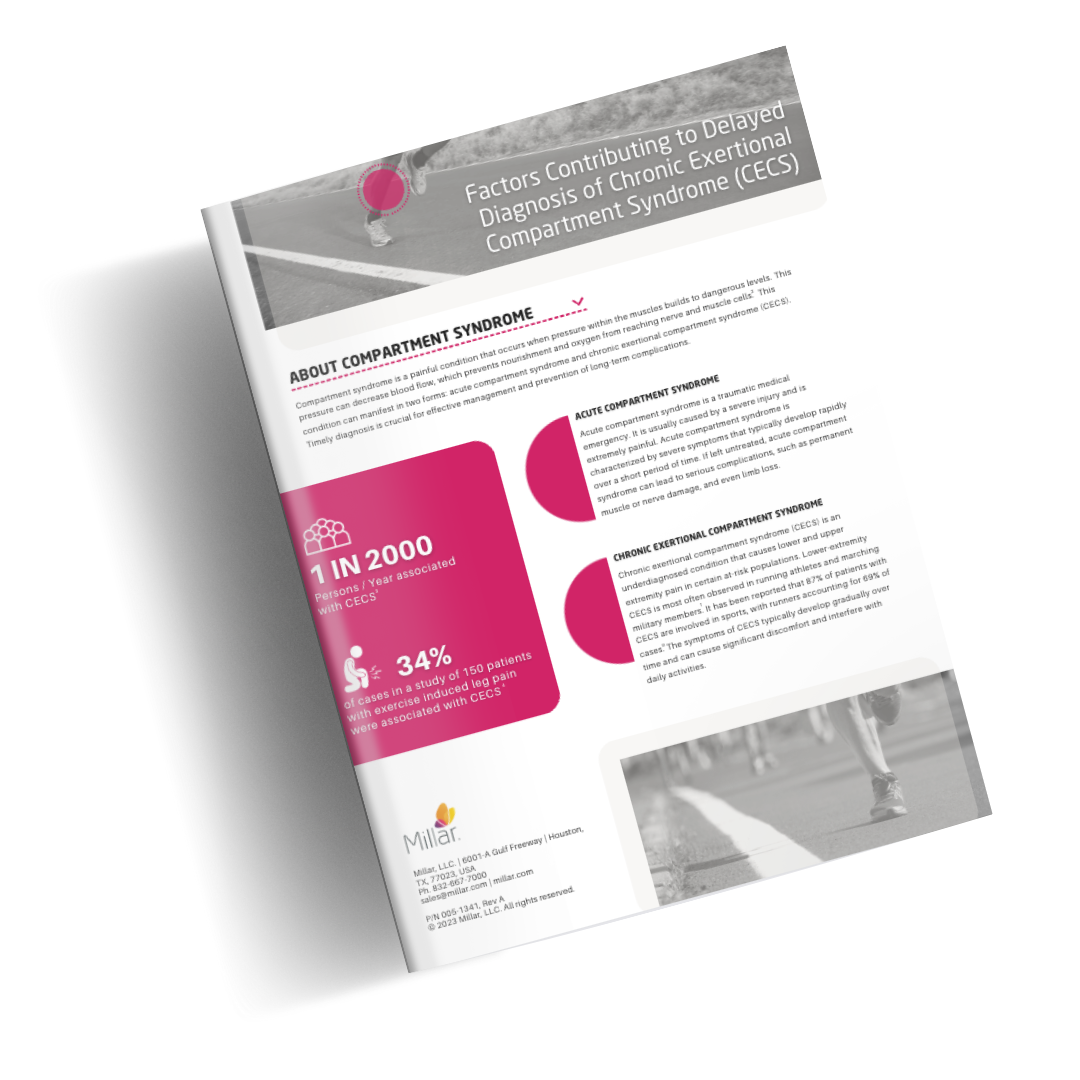Factors Contributing to Delayed Diagnosis of CECS
Compartment syndrome is a painful condition that occurs when pressure within the muscles builds to dangerous levels. This condition can manifest in two forms: acute compartment syndrome and chronic exertional compartment syndrome (CECS).

Download the White Paper.
Fill out the form to grant access to the White Paper titled Factors Contributing to Delayed Diagnosis of Chronic Exertional Compartment Syndrome:
Beyond Fluid-Filled Needles.
Discover how innovative catheter-based devices are changing the game in diagnosing Chronic Exertional Compartment Syndrome (CECS). Explore the importance of continuous pressure monitoring during exercise and its potential to reduce misdiagnosis. In our comprehensive white paper, you'll explore the complexities of CECS diagnosis and learn about the groundbreaking solutions transforming the medical landscape. Topics include:
- Early Diagnosis Matters: Understand the pivotal role of early CECS diagnosis in the effective management and prevention of complications.
- Identifying Delay Factors: Explore the challenges contributing to delayed CECS diagnosis, from patient-related issues to a lack of awareness.
- Symptom Variability: Learn how the diverse presentations of CECS symptoms impact the accuracy of diagnosis.
- Diagnostic Criteria Comparison: Get an in-depth analysis of diagnostic criteria, including the Roscoe and Pedowitz methods, and their implications.
- Game-Changing Technology: Learn more about the Millar Mikro-Cath™ Pressure Catheter and how its catheter-based technology elevates diagnostic confidence in CECS cases.
By downloading our white paper, you'll gain a deeper understanding of CECS diagnosis and the transformative role that catheter-based technology plays in improving patient outcomes.

